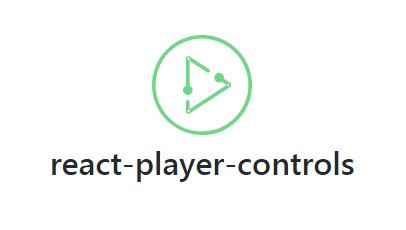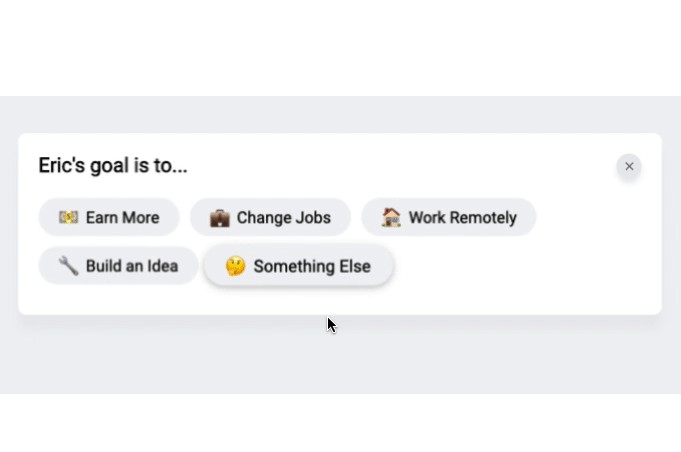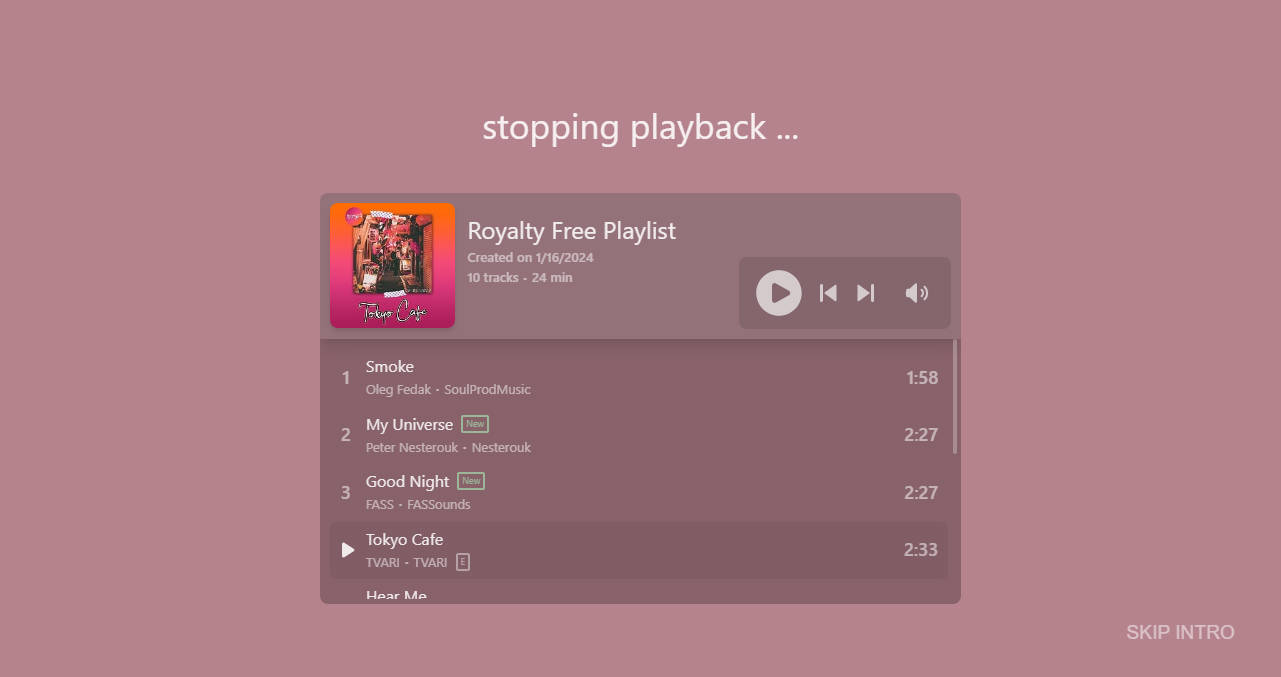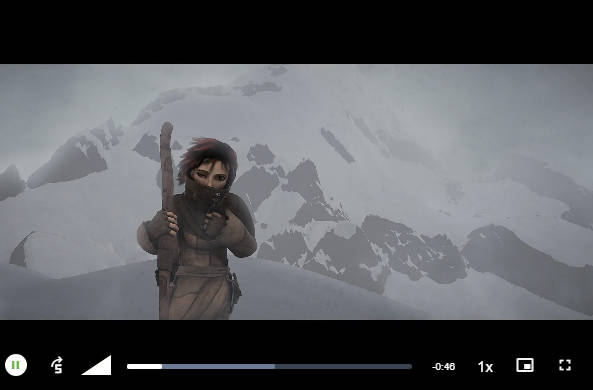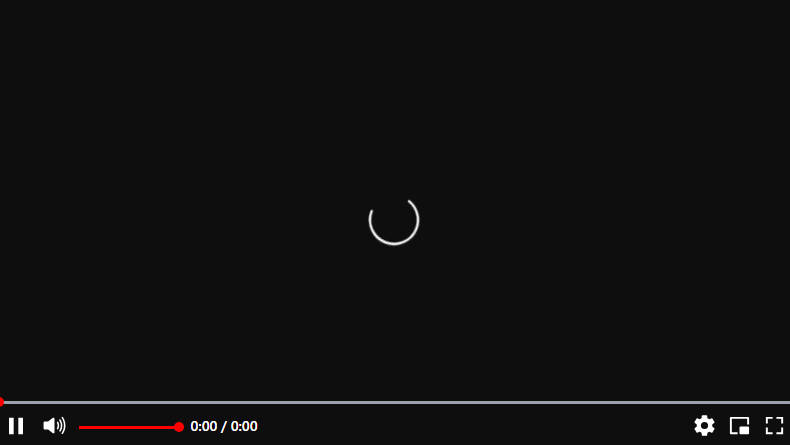react-player-controls
This is a minimal set of modular, tested and hopefully useful React components for composing media player interfaces. It is designed for you to compose media player controls yourself using a small and easy-to-learn API.
From a library point of view, creating and providing components like
Installation
npm i react-player-controls
Usage
// ES2015+ import
import { Slider, Direction } from 'react-player-controls'
// Using CommonJS
const { Slider, Direction } = require('react-player-controls')
API
<Button />
<Button /> is basically a simple HTML button.
<Button onClick={() => alert('clicked')}>
Click me
</Button>
| Prop name | Default value | Description |
|---|---|---|
onClick |
- | Required. A callback function that is invoked when the button is clicked. |
isEnabled |
true |
Whether the button is enabled. Setting this to false will set the disabled attribute on the button element to true. |
className |
null |
A string to set as the HTML class attribute |
style |
{} |
Styles to set on the button element. |
children |
null |
Child elements. |
Direction
An enum describing a slider's active axis.
| Key | Value |
|---|---|
HORIZONTAL |
"HORIZONTAL" |
VERTICAL |
"VERTICAL" |
<FormattedTime />
<FormattedTime /> translates a number of seconds into the player-friendly format of m:ss, or h:mm:ss if the total time is one hour or higher.
// This will render -1:01:02
<FormattedTime numSeconds={-3662} />
| Prop name | Default value | Description |
|---|---|---|
numSeconds |
0 |
A number of seconds, positive or negative |
className |
null |
A string to set as the HTML class attribute |
style |
{} |
Styles to set on the wrapping span element. |
<PlayerIcon />
<PlayerIcon /> is not really a component in itself, but a container of a number of icon components.
<PlayerIcon.Play />
<PlayerIcon.Pause />
<PlayerIcon.Previous />
<PlayerIcon.Next />
<PlayerIcon.SoundOn />
<PlayerIcon.SoundOff />
Any props passed to a <PlayerIcon.* /> component will be passed onto the underlying svg element.
<Slider />
The <Slider /> helps you build things like volume controls and progress bars. Slightly counterintuitively, it does not take a value prop, but expects you to keep track of this yourself and render whatever you want inside it.
What this component actually does is that it renders an element inside itself, on top of its children, which listens to mouse events and invokes change and intent callbacks with relative, normalised values based on those events.
<Slider
direction={Direction.HORIZONTAL}
isEnabled
onIntent={intent => console.log(`hovered at ${intent}`)}
onChange={newValue => console.log(`clicked at ${newValue}`)}
onChangeStart={startValue => console.log(`started dragging at ${startValue}`)}
onChangeEnd={endValue => console.log(`stopped dragging at ${endValue}`)}
>
{/* Here we render whatever we want. Nothings is rendered by default. */}
</Slider>
| Prop name | Default value | Description |
|---|---|---|
direction |
Direction.HORIZONTAL |
The slider's direction |
isEnabled |
true |
Whether the slider is interactable |
onIntent |
() => {} |
A function that is invoked with the relative, normalised value at which the user is hovering. |
onChange |
() => {} |
A function that is invoked with the latest relative, normalised value that the user has set by either clicking or dragging. |
onChangeStart |
() => {} |
A function that is invoked with the relative, normalised value at which the user started changing the slider's value. |
onChangeEnd |
() => {} |
A function that is invoked with the relative, normalised value at which the user stopped changing the slider's value. When the component unmounts, this function will be invoked with a value of null. |
children |
null |
Child elements. |
className |
null |
A string to set as the HTML class attribute. |
style |
{} |
Styles to set on the wrapping div element. |
overlayZIndex |
10 | The z-index of the invisible overlay that captures mouse events |
Recipies
Styled buttons with icons
import { Button, PlayerIcon } from 'react-player-controls'
// A base component that has base styles applied to it
const PlayerButton = ({ style, children, ...props }) => (
<Button
style={{
appearance: 'none',
outline: 'none',
border: 'none',
borderRadius: 3,
background: 'white',
color: 'blue',
'&:hover': {
'color': 'lightblue',
},
...style,
}}
{...props}
>
{children}
</Button>
)
// Compose buttons with matching icons. Use whatever icon library
// you want. If you don't have any particular logic for each of the
// buttons, you might not need this abstraction.
const PlayButton = props => <Button {...props}><PlayerIcon.Play /></Button>
const PauseButton = props => <Button {...props}><PlayerIcon.Pause /></Button>
const PreviousButton = props => <Button {...props}><PlayerIcon.Previous /></Button>
const NextButton = props => <Button {...props}><PlayerIcon.Next /></Button>
Styled slider
import { Direction, Slider } from 'react-player-controls'
const WHITE_SMOKE = '#eee'
const GRAY = '#878c88'
const GREEN = '#72d687'
// A colored bar that will represent the current value
const SliderBar = ({ direction, value, style }) => (
<div
style={Object.assign({}, {
position: 'absolute',
background: GRAY,
borderRadius: 4,
}, direction === Direction.HORIZONTAL ? {
top: 0,
bottom: 0,
left: 0,
width: `${value * 100}%`,
} : {
right: 0,
bottom: 0,
left: 0,
height: `${value * 100}%`,
}, style)}
/>
)
// A handle to indicate the current value
const SliderHandle = ({ direction, value, style }) => (
<div
style={Object.assign({}, {
position: 'absolute',
width: 16,
height: 16,
background: GREEN,
borderRadius: '100%',
transform: 'scale(1)',
transition: 'transform 0.2s',
'&:hover': {
transform: 'scale(1.3)',
}
}, direction === Direction.HORIZONTAL ? {
top: 0,
left: `${value * 100}%`,
marginTop: -4,
marginLeft: -8,
} : {
left: 0,
bottom: `${value * 100}%`,
marginBottom: -8,
marginLeft: -4,
}, style)}
/>
)
// A composite progress bar component
const ProgressBar = ({ isEnabled, direction, value, ...props }) => (
<Slider
isEnabled={isEnabled}
direction={direction}
onChange={/* store value somehow */}
style={{
width: direction === Direction.HORIZONTAL ? 200 : 8,
height: direction === Direction.HORIZONTAL ? 8 : 130,
borderRadius: 4,
background: WHITE_SMOKE,
transition: direction === Direction.HORIZONTAL ? 'width 0.1s' : 'height 0.1s',
cursor: isEnabled === true ? 'pointer' : 'default',
}}
{...props}
>
<SliderBar direction={direction} value={value} style={{ background: isEnabled ? GREEN : GRAY }} />
<SliderHandle direction={direction} value={value} style={{ background: isEnabled ? GREEN : GRAY }} />
</Slider>
)
// Now use <ProgressBar /> somewhere
<ProgressBar
isEnabled
direction={Direction.HORIZONTAL}
value={currentTime / currentSong.duration}
onChange={value => seek(value * currentSong.duration)}
/>
Playback controls
import { Button } from 'react-player-controls'
import Icon from 'some-icon-library'
const PlaybackControls = ({
isPlaying,
onPlaybackChange,
hasPrevious,
onPrevious,
hasNext,
onNext,
}) => (
<div>
<Button disabled={hasPrevious === false} onClick={onPrevious}>
<Icon.Previous />
</Button>
<Button onClick={() => onPlaybackChange(!isPlaying)}>
{isPlaying ? <Icon.Pause /> : <Icon.Play />}
</Button>
<Button disabled={hasNext === false} onClick={onNext}>
<Icon.Next />
</Button>
</div>
)
// Use PlaybackControls in a player context
<PlaybackControls
isPlaying={player.isPlaying}
onPlaybackChange={isPlaying => player.setIsPlaying(isPlaying)}
hasPrevious={songs.indexOf(currentSong) > 0}
hasNext={songs.indexOf(currentSong) < songs.length - 1}
onPrevious={player.setSong(songs[songs.indexOf(currentSong) - 1])}
onNext={player.setSong(songs[songs.indexOf(currentSong) + 1])}
/>
Progress bar with buffer
import { Direction, Slider } from 'react-player-controls'
const Bar = ({ style, children, ...props }) => (
<div
style={{
height: 6,
width: '100%',
...style,
}}
>
{children}
</div>
)
const ProgressBarWithBuffer = ({
amountBuffered,
...props,
}) => (
<Slider
direction={Direction.HORIZONTAL}
{...props}
>
{/* Background bar */}
<Bar style={{ background: 'gray', width: '100%' }} />
{/* Buffer bar */}
<Bar style={{ background: 'silver', width: `${amountBuffered * 100}%` }} />
{/* Playtime bar */}
<Bar style={{ background: 'blue', width: `${100 * currentTime / duration}%` }} />
</Slider>
)
// Use buffer bar somewhere
<ProgressBarWithBuffer
amountBuffered={secondsBuffered / duration}
{/* callback props etc */}
/>
Progress bar that shows the target time on hover
import { Direction, FormattedTime, Slider } from 'react-player-controls'
// Create a basic bar that represents time
const TimeBar = ({ children }) => (
<div
style={{
height: 6,
width: '100%',
background: 'gray',
}}
>
{children}
</div>
)
// Create a tooltip that will show the time
const TimeTooltip = ({ numSeconds, style = {} }) => (
<div
style={{
display: 'inline-block',
position: 'absolute',
bottom: '100%',
transform: 'translateX(-50%)',
padding: 8,
borderRadius: 3,
background: 'darkblue',
color: 'white',
fontSize: 12,
fontWeight: 'bold',
lineHeight: 16,
textAlign: 'center',
...style,
}}
>
<FormattedTime numSeconds={numSeconds} />
</div>
)
// Create a component to keep track of user interactions
class BarWithTimeOnHover extends React.Component {
static propTypes = {
duration: PropTypes.number.isRequired,
}
constructor(props) {
super(props)
this.state = {
// This will be a normalised value between 0 and 1,
// or null when not hovered
hoverValue: null,
}
this.handleIntent = this.handleIntent.bind(this)
this.handleMouseLeave = this.handleMouseLeave.bind(this)
}
handleIntent(value) {
this.setState({
hoverValue: value,
})
}
handleMouseLeave() {
this.setState({
hoverValue: null,
})
}
render() {
const { duration } = this.props
const { hoverValue } = this.state
return (
<Slider
direction={Direction.HORIZONTAL}
style={{
position: 'relative',
}}
onIntent={this.handleIntent}
onMouseLeave={this.handleMouseLeave}
>
<TimeBar />
{hoverValue !== null && (
<TimeTooltip
numSeconds={hoverValue * duration}
style={{
left: `${hoverValue * 100}%`,
}}
/>
)}
</Slider>
)
}
}
// Let's use it somewhere
<BarWithTimeOnHover duration={video.duration} />
Base CSS styles (as seen on the docs page)
/* Root slider component */
.slider {
position: relative;
}
.slider.is-horizontal {
width: 200px;
height: 8px;
}
.slider.is-vertical {
width: 8px;
height: 200px;
}
/* Bars – can be progress. value, buffer or whatever */
.bar {
position: absolute;
border-radius: 50%;
}
.bar.is-background {
background: #878c88;
}
.bar.is-value {
background: #72d687;
}
.bar.is-horizontal {
top: 0;
bottom: 0;
left: 0;
/* width: set dynamically in js */;
height: 100%;
}
.bar.is-vertical {
right: 0;
bottom: 0;
left: 0;
width: 100%;
/* height: set dynamically in js */;
}
/* Slider handle */
.handle {
position: absolute;
width: 16px;
height: 16px;
background: 'green';
border-radius: 50%;
transform: scale(1);
transition: transform 0.2s;
}
.handle:hover {
transform: scale(1.3);
}
.handle.is-horizontal {
top: 0;
/* left: set dynamically in js to x %; */
margin-top: -4px;
margin-left: -8px;
}
.handle.is-vertical {
left: 0;
/* bottom: set dynamically in js to x %; */
margin-bottom: -8px;
margin-left: -4px;
}
